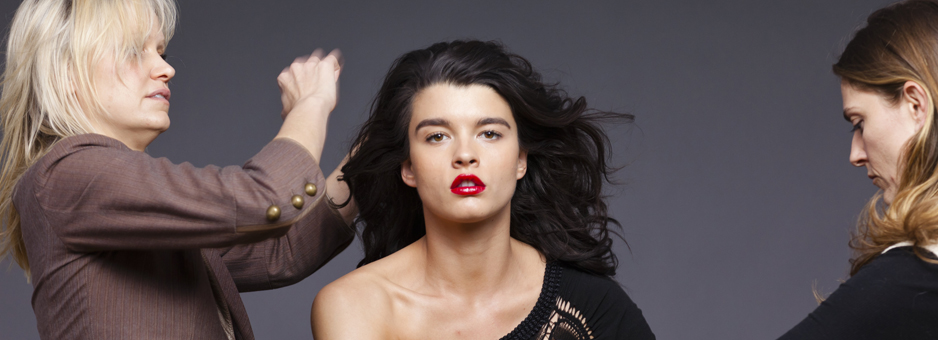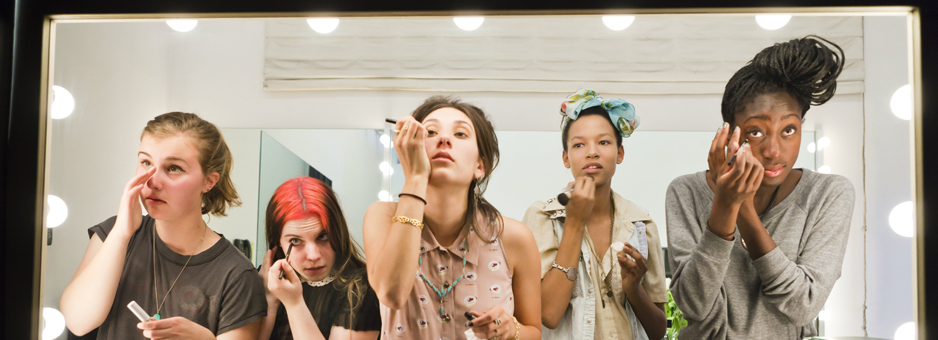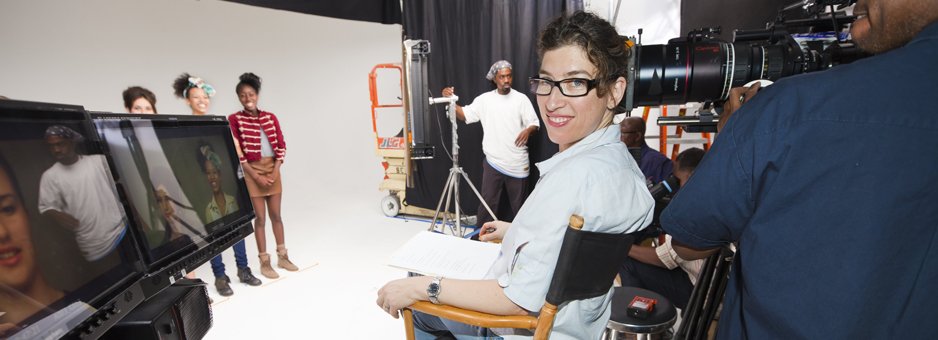- House of Cards
- Hillsborough - Never Forgotten
- Grundy UFA
- Beauty Culture
- Rock and Roll Hall of Fame
- Merlin




BEAUTY CULTURE
Chainsaw, Hollywood
Chainsaw uses Baselight and its unique, file-based workflow to post insightful documentary on fashion photography and its impact on society
Beauty Culture, a fascinating new exhibition at The Annenberg Space for Photography in Los Angeles, examines photography's role in capturing and defining notions of modern female beauty and how these images influence people's lives in both celebratory and disturbing ways.
In addition to more than 170 photographs in the museum's print gallery, the exhibition features a 30 minute documentary that expands upon its theme through interviews with well-known photographers, models, historians and beauty experts. The documentary screens at 4K in the museum's central, circular gallery in rotation with four 5-minute "Voice of the Photographer" shorts focusing on the work of well-known photographers Lauren Greenfield (who also directed the documentary and "VOP" segments), Melvin Sokolsky, Tyen and Albert Watson. The Beauty Culture documentary and Voice of the Photograher films were by produced by Greenfield and her producer-partner Frank Evers' company, Evergreen Pictures.
Post production work for the four "VOP" shorts as well as an HD-version of the 30-minute documentary was completed at Chainsaw in Hollywood. The facility employed its Baselight systems to perform colour grading as well as to conform portions of the project.
Interview segments were captured with three Red cameras. Other elements were shot with Panasonic, Sony and Canon digital cameras. The hundreds of still photographs originated primarily as TIFF files, while a few archival elements derived from tape sources.
Chainsaw employs a file-based workflow that accommodates projects with mixed sources extrememy well. It includes a central Avid Unity storage network serving a phalanx of suites equipped with Baselight, Avid and Final Cut Pro systems. This workflow allows the facility to manage large volumes of file-based source media, mix formats and quickly move projects back and forth between editorial, grading, and finishing.
"We have ten post production finishing suites that can call up any of our Baselight, Avid or Final Cut Pro systems—and I don't know of anyone else who can say that," explains Chainsaw vice president for business development Michael Levy.
"The post work on Beauty Culture was particularly challenging, in large part due to the huge volume and variety of source media and extremely short turn-around," notes producer Frank Evers. "It would have been very difficult to complete the project within the necessary timeframe without the versatile, file-based workflow that Chainsaw offers."
The Red-captured interview segments were conformed and graded in Baselight. This part of the process was done in Baselight because of its strength at working with RED metadata and media files. "One of the advantages of Baselight is its ability to recognize and easily manage different generations of Red camera media in one timeline," notes Chainsaw colourist Andy Lichtstein. "We had Red Epic, Red One -2K, 3K, 4K and 5K material—all mapped in Baselight to 1080/30p HD."
"We could play everything on the timeline in real-time," Lichtstein adds. "I could easily move between the timelines, view them in tandem; replace, exchange or update grades simultaneously with editorial in all four five-minute shorts (Voices of the Photographer) and the Beauty Culture thirty-minute documentary."
The non-Red segments of the project were conformed on an Avid Symphony and then made available to Baselight for grading via the Unity server.
To complete the project, the sequences conformed on Baselight had to be merged with those conformed on Symphony. "We used Baselight to render the Red sequences for the Voice of the Photographer segments as DNx 220X media and as uncompressed MXF media for the documentary, so that they could be brought into the Symphony," recalls Chainsaw Baselight editor Carlos Verdugo. "Since the EDL remembered their place in the timeline, we were able to cut those scenes in over the pre-existing, low-rez material. It was a really nice workflow."
Although the Beauty Culture project was unusual for its sheer variety of source media, it is no longer unusual for productions to include multiple formats of tape and file-based production and archival sources. "It's become the norm," says Levy. "Especially among documentaries as they are often shot in different locations over extended periods of times."
Having a flexible workflow and powerful tools like Baselight is therefore more important than ever. "The beautiful thing about Baselight for this project was its elegant RED integration into our workflow, grading and finishing from all those different cameras," concludes Lichtstein. "Baselight was essential, the perfect device."



